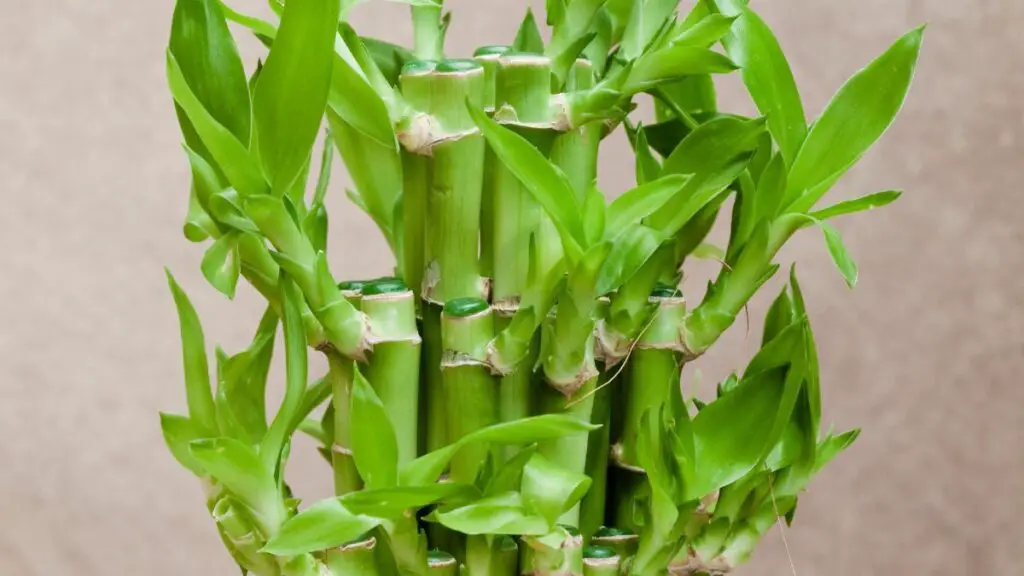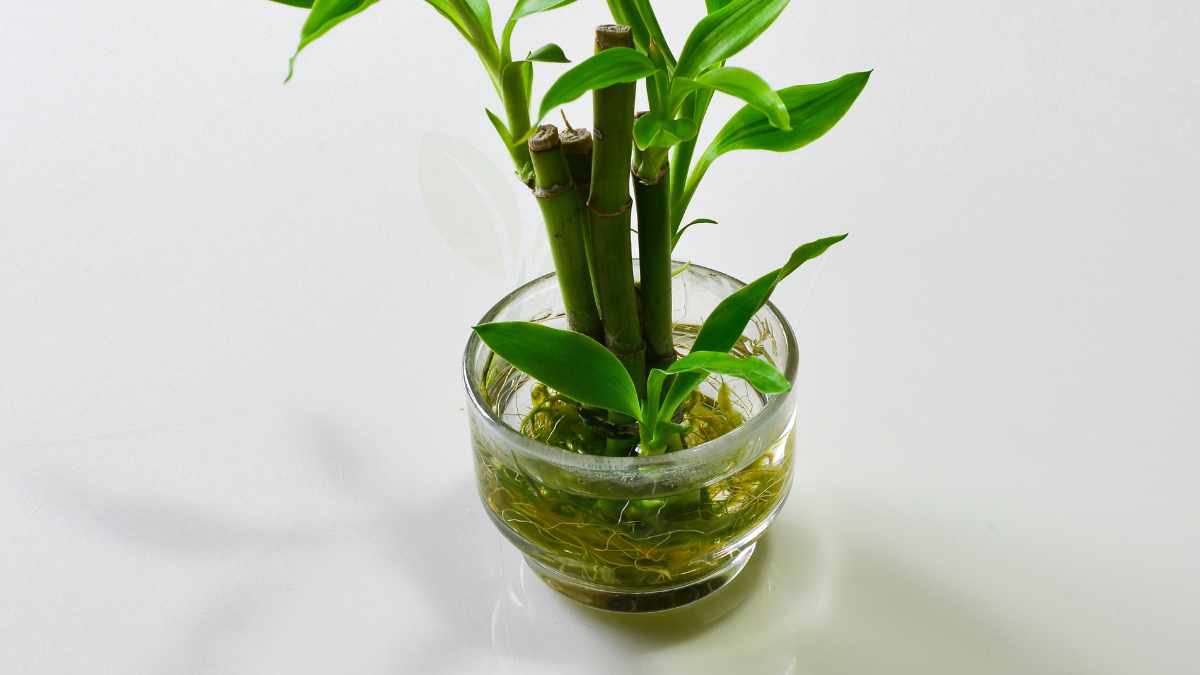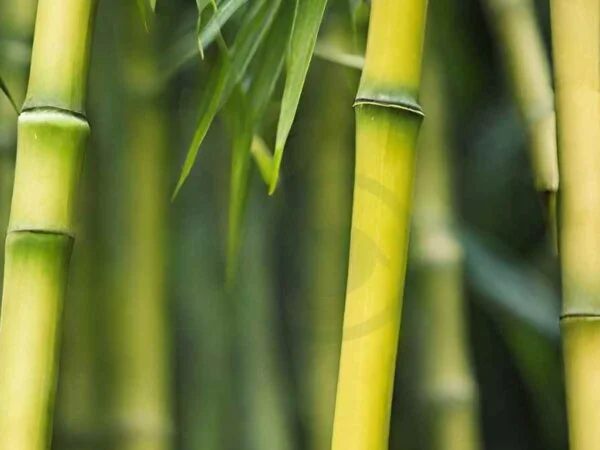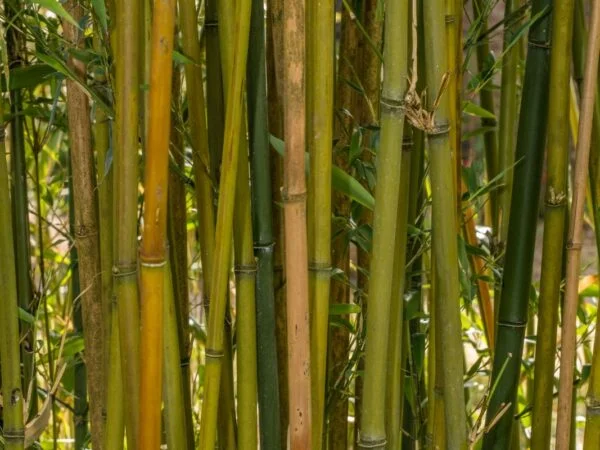Ever wondered about the magic a little bamboo plant, a spruce gift, can bring into your home? Imagine a touch of nature effortlessly transforming your space, purifying the air, and bringing luck your way. Curious to unlock the secrets behind this humble yet powerful green companion and spruce up your space with a mature plant gift? Delve into our guide where we unravel the wonders of the little bamboo plant, from its easy care requirements to the positive energy it radiates. Discover how this tiny marvel can elevate your living environment and uplift your spirits. Ready to invite prosperity and tranquility into your life with just a little bamboo plant? Let's explore together!
Growing Little Bamboo Indoors

Suitable Location
When growing little bamboo indoors, it is crucial to choose a suitable location with indirect sunlight. This plant thrives in bright, filtered light, making it ideal for spaces away from direct sun exposure.
Well-Draining Potting Mix
To ensure the optimal growth of your bamboo plant, use a well-draining potting mix. This helps prevent waterlogging, which can lead to root rot and other issues.
Height and Width Consideration
When deciding on the placement of your lucky bamboo, consider both its height and width. This will help you find a spot where the plant has enough room to grow without being cramped.
Light and Soil Needs
Partial Shade
Little bamboo plants thrive in partial shade, making them ideal for indoor environments. Sunlight exposure should be indirect to prevent any damage to the delicate leaves.
Acidic Soil
When it comes to soil requirements, little bamboo plants prefer acidic soil to replicate their natural habitat. This type of soil composition helps in maintaining the plant's health and growth.
Moisture Levels
To prevent root rot, it is crucial to keep the soil consistently moist but not waterlogged. Overwatering can lead to root issues, impacting the overall health of the plant.
Watering and Nutrition
Watering
Water the little bamboo plant with distilled or pure spring water to ensure optimal growth. Fresh water is essential for the plant's health, avoiding the use of tap water containing harmful chemicals that can harm its growth. Overwatering should be avoided to prevent root rot, which can be detrimental to the plant's overall well-being.
Nutrition
To promote healthy growth and encourage new growth, it is crucial to provide the little bamboo plant with proper nutrition. Occasionally feeding the plant with a balanced liquid fertilizer can provide the necessary nutrients for its development. This helps in maintaining a vibrant and thriving little bamboo plant in your indoor space.
Incorporating these watering and nutritional practices into your little bamboo plant care routine can significantly impact its overall health and appearance. Ensuring that the plant receives adequate water and nutrients will lead to lush green foliage and robust growth.
Temperature and Humidity Control
Optimal Conditions
To ensure optimal growth, maintain temperatures between 65°F to 90°F for the little bamboo plant. This temperature range fosters healthy development without causing stress.
Moderate Humidity Levels
Moderate humidity is essential to prevent the little bamboo plant from drying out. Consistent moisture in the air helps maintain the plant's health and vitality.
Protection from Drafts
Shield the plant from drafts and sudden temperature changes that can harm its delicate structure. Sudden cold or hot air can shock the plant, affecting its growth.
Key Points:
- Keep temperatures within 65°F to 90°F for optimal growth.
- Maintain moderate humidity levels to prevent drying out.
- Protect the plant from drafts and sudden temperature changes.
Pruning and Maintenance
Trimming Leaves
Trim yellow or damaged leaves to promote healthy growth of the little bamboo plant. This practice helps maintain the plant's vitality and overall appearance. By removing these leaves, you prevent nutrients from being wasted on unhealthy foliage.
Regularly prune the little bamboo plant to encourage new growth and maintain its shape. This process also helps in preventing overcrowding within the plant, allowing for better air circulation and sunlight exposure. Proper pruning can lead to a more luscious and vibrant appearance.
Water Quality Check
Ensure to remove algae buildup from the water where the little bamboo plant is placed. Algae can not only make the water look unsightly but can also lead to mold growth, which can be harmful to the plant. Keeping the water clean and clear is essential for the health and well-being of your little bamboo.
Monitor the water level regularly to ensure that it remains at an appropriate level for the plant's roots. Little bamboos thrive in water, so maintaining a consistent water level is crucial for their growth and development. Adequate hydration contributes significantly to a healthy root system.
Pest Control
Check for pests such as spider mites regularly as they can damage the leaves of your little bamboo plant. Spider mites are common pests that feed on plant juices, leading to discoloration and wilting of leaves. Taking prompt action against these pests is crucial for protecting your plant's health.
Consider using natural remedies like neem oil or insecticidal soap to control pest infestations effectively. These solutions are safe for plants and help in eradicating unwanted pests without harming the environment. Regular inspection and treatment can ensure that your little bamboo continues to thrive.
Propagation Techniques
Stem Cuttings
To propagate little bamboo plants, use stem cuttings in water. Ensure each cutting has at least one node for successful propagation. Change the water regularly to prevent stagnation and bacterial growth.
Water Change Frequency
Regularly change the water when propagating small bamboo plants through stem cuttings. Stagnant water can hinder growth and lead to bacterial issues.
Node Importance
The presence of at least one node on the cutting is crucial for successful lucky bamboo propagation. Nodes are essential for root development and overall plant growth.
Potting Essentials
Adequate Container
When potting a little bamboo plant, it's crucial to select a container with proper drainage holes. Without adequate drainage, the plant's roots can become waterlogged, leading to root rot. Ensure the chosen pot allows excess water to escape easily.
Stabilizing with Pebbles
To stabilize the little bamboo plant in its pot, consider using pebbles or rocks at the bottom before adding soil. This helps in maintaining the plant's position and prevents it from toppling over due to its height or weight. It aids in promoting proper drainage.
Regular Repotting
Little bamboo plants benefit greatly from being repotted every 2-3 years. This practice helps refresh the soil, providing essential nutrients for healthy growth. Moreover, repotting prevents overcrowding of roots within the container, allowing the plant to thrive optimally.
Handling Common Issues
Adjusting Light Exposure
Yellowing leaves on your little bamboo plant can be a sign of light stress. Ensure it gets enough indirect sunlight to thrive.
Overexposure to direct sunlight can scorch the delicate leaves, causing them to turn yellow and dry out. Consider moving the plant to a spot with filtered light or placing sheer curtains to reduce intensity.
Combatting Pests
To combat pests like spider mites, use neem oil or insecticidal soap. These natural remedies effectively eliminate pests without harming your plant.
Regularly inspect the undersides of leaves for any signs of infestation. If you notice webbing or tiny insects, act promptly to prevent further damage.
Treating Root Rot
Promptly treat root rot by adjusting your watering habits and improving drainage. Overwatering can lead to this fungal infection, causing the roots to decay.
If you suspect root rot, carefully remove the plant from its pot and inspect the roots. Trim away any mushy or discolored roots before repotting in fresh, well-draining soil.
Little Bamboo and Chinese Traditions
Symbolism
Bamboo holds significant symbolism in Chinese culture, especially when arranged in specific numbers of stalks. For instance, three stalks symbolize happiness, wealth, and longevity. On the other hand, five stalks represent the areas of life that bring wealth: emotional, intuitive, mental, physical, and spiritual.
Superstitions to Avoid
Respecting Chinese traditions means avoiding certain arrangements. In particular, gifting lucky bamboo with four stalks should be avoided as the number four is associated with death in Chinese culture. Instead, opt for arrangements with other auspicious numbers like three or five stalks.
Cultural Significance
Embrace the cultural significance of lucky bamboo as a gift. It is believed to bring luck and prosperity to the recipient's life. This plant is not just a decorative item but a symbol of good fortune and positive energy in Chinese traditions.
Final Remarks
You've now learned how to care for your little bamboo plant indoors, ensuring it thrives and adds a touch of nature to your space. By providing the right light, soil, water, and nutrients, as well as maintaining optimal temperature and humidity levels, you can enjoy a healthy and vibrant little bamboo plant. Remember to prune, propagate, and pot your plant correctly while being vigilant against common issues to keep it flourishing.
Incorporate these practices into your little bamboo plant care routine to create a harmonious environment that mirrors Chinese traditions. Embrace the beauty and tranquility this plant brings while enhancing your surroundings with its elegance. Start implementing these tips today to foster growth and well-being in your little bamboo plant.
Frequently Asked Questions
Is little bamboo easy to grow indoors?
Yes, little bamboo is relatively easy to grow indoors. It requires minimal care and can thrive in indoor environments with proper light, water, and soil conditions.
What are the light and soil needs for growing little bamboo indoors?
Little bamboo plants prefer bright, indirect light for at least 6 hours a day. Use well-draining potting soil rich in organic matter to ensure good root health and growth.
How should I water and provide nutrition to my little bamboo plant?
Water your little bamboo plant when the top inch of soil feels dry. Use room temperature water and avoid overwatering. Feed it with a balanced liquid fertilizer every 4-6 weeks during the growing season.
What temperature and humidity levels are ideal for little bamboo plants?
Maintain temperatures between 65-80°F (18-27°C) and humidity levels around 50-70%. Avoid placing the plant near drafts or heating/cooling vents to prevent stress.
When and how should I prune my little bamboo plant for maintenance?
Prune your little bamboo plant in spring or early summer to remove dead or yellowing leaves. Use clean, sharp shears to make cuts at a 45-degree angle just above a node.
What are some propagation techniques for little bamboo plants?
You can propagate little bamboo through division or by rooting stem cuttings in water or moist soil. Ensure each division or cutting has several healthy roots attached for successful propagation.
What are the essential potting requirements for little bamboo plants?
Choose a pot with drainage holes to prevent waterlogging. Repot the plant every 2-3 years using fresh potting mix. Ensure the new pot is slightly larger than the current one to accommodate growth.
How can I handle common issues like yellowing leaves or pests affecting my little bamboo plant?
Yellow leaves may indicate overwatering or nutrient deficiencies. Adjust watering and feed appropriately. For pests like spider mites, gently wipe the leaves with a damp cloth or use insecticidal soap as needed.
Are there any Chinese traditions associated with growing little bamboo plants?
In Chinese culture, lucky bamboo (a type of small Dracaena) symbolizes prosperity, happiness, and good fortune when given as gifts or kept in homes/offices according to Feng Shui principles.
Image Source: Paid image from CANVA





